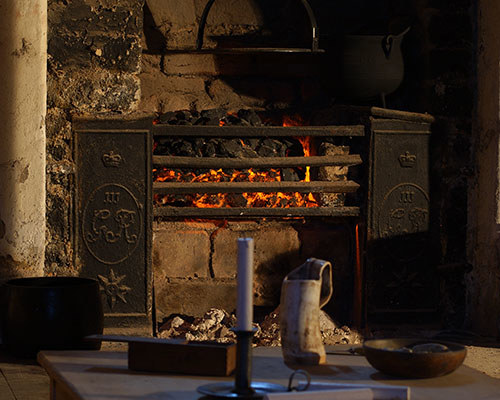
Just an hour
An hour at Edinburgh Castle is an hour well spent. You can squeeze in many of its highlights – and make a list of others to see in future.
1 hour
-

Portcullis Gate
Pass beneath the spikes of a raised portcullis. This fortified gateway was built almost 450 years ago in the wake of the devastating Lang Siege. Three sets of heavy wooden doors once sat alongside the iron gate to ward off intruders. The top floor – Argyle Tower – was added in the 1880s. Look for the lions, a symbol of royalty.
-

Lang Stairs
Count all 70 steps on the most direct route to the summit of the Castle Rock. This great flight of stairs once formed the original entrance to the castle. The gentler alternative route that winds up and around the cobbled hill was created in the 1600s for moving heavy guns.
-

St Margaret's Chapel
Step inside the oldest building in Edinburgh. King David I had this tiny chapel built around 1130 in memory of his mother. For a time, it was the only part of the castle left standing. The chapel’s plain exterior belies the beauty within: look for the ornate original arches and stained glass windows from the 1920s.
-

Mons Meg
Stare down the barrel of this six-tonne siege gun and imagine its awesome power. Given to King James II in 1457, Mons Meg could fire a 150kg gunstone for up to 3.2km (2 miles). One fired over the city to celebrate the marriage of Mary Queen of Scots landed in what is now the Royal Botanic Garden.
-

Panorama of Edinburgh
From high upon the Castle Rock, the views are unrivalled. Look out from the battlements across Scotland’s capital city, the Firth of Forth and on to Fife. On a clear day, you can see the famous Forth Bridges, the Bass Rock and even Highland peaks like Ben Lomond – plus many of Edinburgh’s historic sights.
-

Honours of Scotland
Be dazzled by the oldest Crown jewels in the British Isles, first used together for the coronation of Mary Queen of Scots in 1543. Where the priceless crown, sceptre and sword of state were kept before the Crown Room was built is a mystery.
-

Great Hall
This impressive hall was completed in 1511 to host state ceremonies for King James IV. You can still see the original hammerbeam roof - look for carvings on the stones holding it up. There is a remarkable collections of weapons and armour around the walls.
-

Prisons of War Exhibition
Pirates and prisoners of war were held in the vaults below the Great Hall in the 1700s and 1800s. Learn about the sailors locked up here, among them many Americans and a five-year-old French drummer boy captured at the Battle of Trafalgar. One successful escape attempt saw 48 inmates flee.
-

One o'clock Gun Exhibition
Learn about Scotland’s most explosive timekeeper. The 105mm field gun is fired every day at 1pm, except Sundays, Good Friday and Christmas Day. The practice goes back to 1861, when the blast signalled the time to ships in the Firth of Forth.




